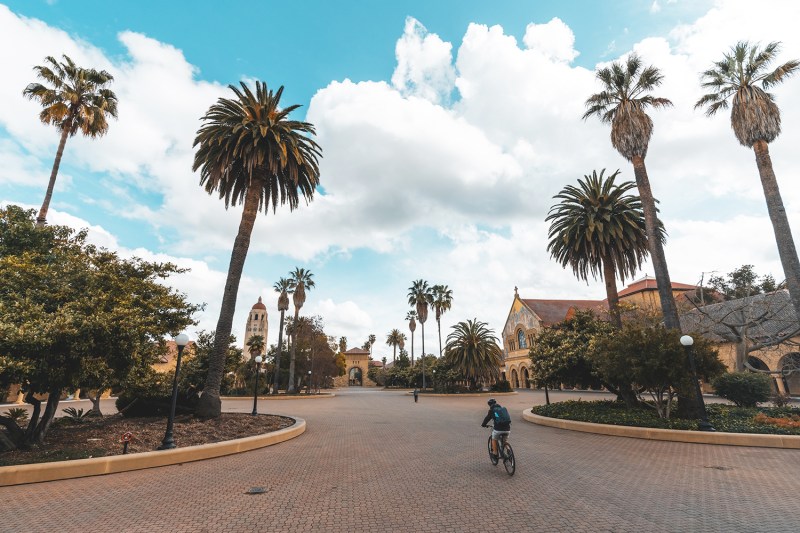The last time Stanford created a new school was 75 years ago, when it created the School of Earth. Now, with the planning of a new school focused on sustainability and climate, there is a unique opportunity to ensure students’ voices are heard, advance racial and environmental justice through an interdisciplinary school and build the foundations for a just, equitable new school.
We are writing as the student-initiated and student-led committee for the new school focused on sustainability and climate. The committee is composed of nine undergraduate and graduate students from various departments and programs across campus. Today, we want to share our values in facilitating student involvement in the planning process and our visions for the new school.
This work is urgent, firstly, because we cannot overlook the context of the formation of the new school amid the events of the last year. Though the idea of a new campus initiative focused on sustainability and climate has long been a part of Stanford’s Long Range Planning processes, it was announced publicly for the first time in the early days of a pandemic disproportionately affecting low income and communities of color, and just before a critical moment in national and global reckoning with police violence. For much of the tenure of this committee, we reckoned with the paradox of the institutionalization of ‘Sustainability’ at school status, while African and African American Studies continued to be deprioritized, and its communities continued to rally around departmentalization. This context, along with our personal experiences as students engaging with sustainability at Stanford in our academics, work or otherwise, has provided the urgency for our work to make sure as best we can that student voices are an integral part of shaping an institution grounded in justice.
In light of this, our committee’s work, and thus our visions for the new school, are guided by the following values:
- First, we recognize that the exclusivity that pervades sustainability and environmentalist cultures is particularly harmful to Black, Indigenous, and People of Color (BIPOC) communities and often leaves our knowledge of and connection to land unacknowledged. Cultures surrounding sustainability and environmentalism have historically perpetrated harm against marginalized communities. At the same time, we recognize the experience, expertise, and leadership of BIPOC communities in attending to these challenges, and consider the work of our committee as an opportunity to work in solidarity to create a new institution.
- Second, we want to place an emphasis on transparency in our own work in student input, and to advocate for and facilitate transparency between faculty leaders of the school planning process and the student body.
- Third, not only is it important for the school to create systems that allow for an equitable and transparent school, but it is just as important to ensure the school follows through with these systems. Lip service to key issues is meaningless without structural implementation of equity and justice. We hope that in advocating for accountability to student input and concerns, we can ensure that input is put into meaningful action.
Across these values lay the keen awareness that our committee is situated in a difficult but impactful position. Our committee is working in an advisory role with faculty leaders of the school planning process, while striving to advocate for the needs and interests of students. Some of us have organizing backgrounds in activism deeply tied to our communities. Our work has drawn from the ongoing efforts of groups like Students for Environmental and Racial Justice, Fossil Free Stanford, the Environmental Justice Working Group, and many others where students have long vocalized and organized around their visions for a better institution. We hope to build pathways between this existing work and the planning and design process of the new school, so we can be both partners to school leadership in this work and a crucial counterpoint to the institutional status quo.
If there are two things we hope to leave you with, they are: First, the new school, in our ideal visions, is about all of us. Despite the long standing institutional and cultural silos that sideline BIPOC expertise and relationships to land in favor of white environmentalism, a school that truly centers environmental justice with a global outlook can do the crucial work that it has the responsibility to do. Second, while we remain energized and idealistic about all that the new school has the potential to be, we recognize that the work doesn’t stop at student input within existing institutional processes. As we mentioned previously, and as we can’t emphasize enough, this work builds on the ongoing efforts of student work and organizing from groups and individuals across campus. Through the work of this past quarter and moving forward, we hope to create and sustain pathways between that crucial work and the foundations of a future institution that serves all of us. We are eager to continue pushing for a better Stanford in community with all of you.
Signed,
Ayoade Balogun, African and African American Studies and Environmental Systems Engineering ’21
Sadie Blancaflor, Earth Systems and Anthropology ’22
Jordan Deasy, Urban Studies ’22
Rachel Hu, Atmosphere/Energy Engineering ’22
Jonathan Lu, M.D. ’23
Valeria Rincon, M.S. ’21 Sustainability Science and Practice, B.A. ’21 Political Science
Keoni Rodriguez, History ’21
Meghan Shea, B.S. ’17 Environmental Systems Engineering, Ph.D. Emmett Interdisciplinary Program in Environment & Resources
Shikha Srinivas, M.S. ’22 Sustainable Design and Construction, B.S. ’21 Environmental Systems Engineering
For a summary of our committee’s fall and winter quarter work, and to learn more about how you can provide input, please click here.
The Daily is committed to publishing a diversity of op-eds and letters to the editor. We’d love to hear your thoughts. Email letters to the editor to eic ‘at’ stanforddaily.com and op-ed submissions to opinions ‘at’ stanforddaily.com.
